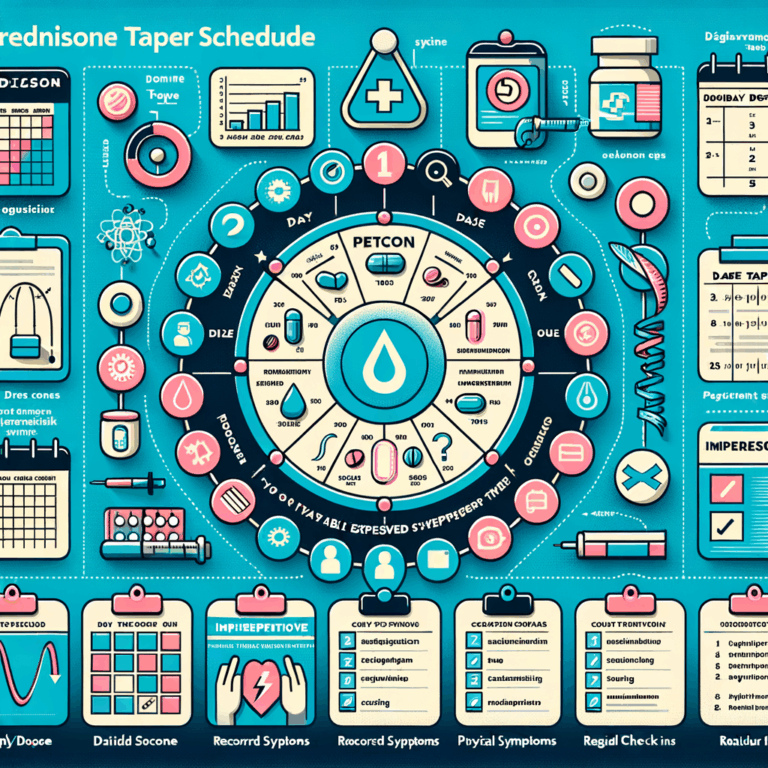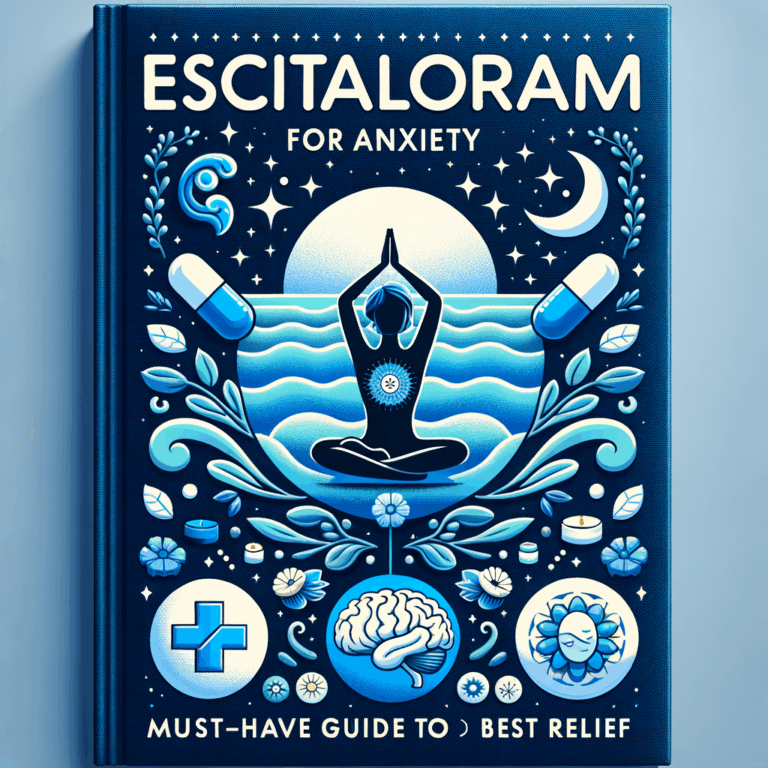
- Introduction
- Quick Overview: What Are Fluoxetine and Sertraline?
- How SSRIs Work
- Mechanism of Action
- Why This Matters
- Fluoxetine: Key Facts
- General Information
- Pharmacokinetics and Dosing
- Sertraline: Key Facts
- General Information
- Pharmacokinetics and Dosing
- Comparative Table: Fluoxetine vs Sertraline
- Effectiveness: Which Works Better?
- Onset of Action
- Side Effects and Tolerability
- Common Side Effects
- Distinct Side Effects
- Sexual Dysfunction
- Withdrawal and Discontinuation
- Drug Interactions
- Medications to Watch
- Special Populations
- Pregnancy and Breastfeeding
- Elderly Patients
- Choosing Between Fluoxetine and Sertraline
- Decision Checklist
- Practical Tips for Starting Treatment
- When to Switch or Augment
- Cost and Accessibility
- Lifestyle Considerations and Non-Drug Support
- Case Examples
- Case 1: Young Adult with Low Energy and Depression
- Case 2: Middle-Aged Patient with PTSD and GI Sensitivity
- Monitoring and Follow-Up
- Common Myths and Misconceptions
- Summary: Fluoxetine vs Sertraline — Key Takeaways
- FAQs
- 1. Can I take fluoxetine and sertraline together?
- 2. Which drug causes weight gain more often?
- 3. Is one safer for teenagers?
- 4. How long before I see benefits?
- 5. Can I drink alcohol while taking these medications?
- 6. What if I miss a dose?
- 7. Do these medications interact with birth control?
- 8. Can I take an SSRI for anxiety only?
- 9. What should I tell my clinician before starting one of these drugs?
- 10. If one SSRI doesn’t work, will another work?
- References
Introduction
Fluoxetine vs Sertraline: choosing the right antidepressant can feel overwhelming. Many people search for clear guidance. This guide breaks the comparison into practical, usable parts. You will learn about how each drug works, side effects, safety, and real-world differences.
We keep the language simple. Also, we offer actionable tips for talking with your clinician. By the end, you should feel equipped to discuss options confidently. Let’s begin with a clear overview.
Quick Overview: What Are Fluoxetine and Sertraline?
Fluoxetine and sertraline belong to a class of medicines called selective serotonin reuptake inhibitors (SSRIs). Doctors commonly prescribe both for depression and anxiety disorders. They raise serotonin levels in the brain to improve mood and reduce anxiety.
Despite sharing a class, the medications differ in chemistry, half-life, and side effect profiles. As a result, one drug may suit a person better than the other. Below, we compare these differences step by step.
How SSRIs Work
Mechanism of Action
Both drugs block the serotonin transporter in nerve cells. Consequently, serotonin stays longer in the synapse. Over weeks, this leads to neural changes that help relieve depression and anxiety.
Additionally, SSRIs indirectly affect other brain chemicals and receptors. These secondary effects partly explain variations in side effects and response among patients.
Why This Matters
Because SSRIs increase serotonin, they can improve mood, sleep, appetite, and motivation. However, not everyone responds the same. Genetics, other medications, and medical history influence outcomes.
Therefore, clinicians individualize treatment based on symptoms, side effects, and patient preferences. The next sections focus on specifics for fluoxetine and sertraline.
Fluoxetine: Key Facts
General Information
Fluoxetine (Prozac) appeared in the 1980s. Clinicians prescribe it for major depressive disorder (MDD), obsessive-compulsive disorder (OCD), bulimia nervosa, panic disorder, and premenstrual dysphoric disorder (PMDD). It also serves off-label for other conditions.
Fluoxetine typically comes in 10 mg, 20 mg, and 40 mg capsules or liquid form. Extended-release formulations exist for some uses.
Pharmacokinetics and Dosing
Fluoxetine has a long half-life—about 2 to 4 days for the parent drug and 4 to 16 days for its active metabolite, norfluoxetine. This long half-life reduces withdrawal risk when stopping suddenly.
Adults often start at 10–20 mg per day. Clinicians may increase the dose every few weeks based on response. Maximum daily doses vary by indication but commonly range up to 80 mg for severe conditions.
Sertraline: Key Facts
General Information
Sertraline (Zoloft) emerged after fluoxetine and remains widely used. Doctors prescribe it for MDD, OCD, panic disorder, social anxiety disorder, PTSD, and PMDD. Sertraline also treats off-label conditions.
Sertraline comes in tablets and oral solution. Typical strengths include 25 mg, 50 mg, and 100 mg. Clinicians tailor dosing to the condition and patient tolerance.
Pharmacokinetics and Dosing
Sertraline has a shorter half-life than fluoxetine—about 26 hours. Its active metabolite has minimal activity. Thus, it clears the body faster.
Clinicians often start adults at 25–50 mg daily. They may increase the dose every 1–2 weeks as needed. For many conditions, the effective dose ranges between 50–200 mg per day.
Comparative Table: Fluoxetine vs Sertraline
| Feature | Fluoxetine | Sertraline |
|---|---|---|
| Typical start dose | 10–20 mg/day | 25–50 mg/day |
| Half-life | 2–4 days (parent); 4–16 days (metabolite) | ~26 hours |
| Common uses | Depression, OCD, bulimia, panic, PMDD | Depression, OCD, panic, PTSD, social anxiety, PMDD |
| Common side effects | Insomnia, nausea, sexual dysfunction, anxiety | Nausea, diarrhea, sexual dysfunction, insomnia |
| Withdrawal risk | Lower due to long half-life | Higher; taper recommended |
| Drug interactions | Moderate; CYP2D6 inhibitor | Moderate; CYP2D6 substrate |
Effectiveness: Which Works Better?
Many studies show that fluoxetine and sertraline have similar overall effectiveness for depression. Meta-analyses place them among first-line SSRI options. As a rule, the correct dose and adherence matter most.
However, slight differences exist for specific conditions. For example, sertraline shows strong evidence for PTSD and social anxiety disorder. Fluoxetine has good data for bulimia nervosa. Thus, clinicians choose based on diagnosis and evidence.
Onset of Action
Both drugs can take 2–4 weeks before noticeable improvement. Substantial benefit often appears after 6–8 weeks. Patience matters with SSRIs.
Because fluoxetine has a long half-life, its effects may stabilize slowly. Conversely, sertraline reaches steady state faster. However, faster steady state does not always mean quicker symptom relief.
Side Effects and Tolerability
Common Side Effects
Both medications share common SSRI side effects. These include nausea, headaches, insomnia, fatigue, and sexual dysfunction. Symptoms often lessen after 1–2 weeks.
Additionally, some patients experience increased anxiety early in treatment. In those cases, clinicians may lower the dose temporarily or provide short-term anxiolytic support.
Distinct Side Effects
Fluoxetine sometimes causes more insomnia and nervousness. Its activating effect can help people with low energy. However, it may worsen anxiety in some patients.
Sertraline tends to cause more gastrointestinal upset, like diarrhea. Conversely, it may be slightly less activating. Individual variations still play a major role.
Sexual Dysfunction
Sexual side effects appear commonly with both drugs. These include reduced libido, delayed orgasm, and erectile dysfunction. They can persist during treatment and affect quality of life.
Because sexual dysfunction differs by person, clinicians discuss options if problems arise. Strategies include dose adjustment, drug holidays (rarely recommended), switching medications, or adding a medication to counteract the side effect.
Withdrawal and Discontinuation
Stopping SSRIs abruptly can cause discontinuation symptoms, such as dizziness, irritability, fatigue, and flu-like sensations. Sertraline causes these symptoms more often due to its shorter half-life.
Fluoxetine’s long half-life acts like a built-in taper. Many patients experience fewer or milder discontinuation symptoms. Nevertheless, clinicians still recommend gradual tapering for both drugs.
Drug Interactions
Both fluoxetine and sertraline interact with other medications via liver enzymes. Fluoxetine inhibits CYP2D6 more strongly. Therefore, it may raise levels of drugs metabolized by that enzyme.
Sertraline is a weaker CYP2D6 inhibitor but still interacts with several drugs. Both drugs increase serotonin levels, so combining them with other serotonergic agents raises serotonin syndrome risk.
Medications to Watch
- MAO inhibitors — dangerous combination; avoid within recommended washout periods.
- Other SSRIs, SNRIs, or triptans — increased serotonin syndrome risk.
- Antiplatelet drugs, NSAIDs, and anticoagulants — increased bleeding risk.
- Certain antipsychotics, antiarrhythmics, and opioids — interactions possible.
Special Populations
Pregnancy and Breastfeeding
Both drugs cross the placenta and appear in breast milk. Doctors weigh benefits and risks when prescribing during pregnancy or breastfeeding. Untreated depression also poses risks to the mother and baby.
Research suggests sertraline may pose slightly lower risk in pregnancy compared with some SSRIs. However, individual factors matter. Clinicians often prefer sertraline or fluoxetine based on patient history and prior response.
Elderly Patients
Older adults metabolize drugs differently and have more medical comorbidities. Both SSRIs can work well in elderly patients, but clinicians monitor for hyponatremia, falls, and drug interactions.
Because fluoxetine stays in the body longer, it may accumulate with age. Sertraline’s shorter half-life offers more flexibility in dose adjustments for older patients.
Choosing Between Fluoxetine and Sertraline
Your clinician bases the choice on diagnosis, symptom profile, past treatment response, side-effect vulnerability, medical history, and drug interactions. They also consider your lifestyle and preferences.
For example, if you have marked fatigue and low energy, fluoxetine’s activating profile could help. Conversely, if you experience nausea easily, sertraline might pose a bigger problem due to GI side effects.
Decision Checklist
- Previous response to either drug.
- Family history of response to SSRIs.
- Risk of drug interactions with current medications.
- Pregnancy plans or breastfeeding concerns.
- Symptoms such as insomnia or GI sensitivity.
Practical Tips for Starting Treatment
Start at a low dose and allow time for the medication to work. Keep a symptom diary to track mood, sleep, appetite, and side effects. Share this diary with your clinician.
Communicate openly about sexual side effects, weight changes, or sleep problems. If side effects appear, do not stop the medication abruptly. Instead, consult your clinician to adjust the dose or consider alternatives.
When to Switch or Augment
If you don’t improve after 6–8 weeks at a therapeutic dose, consider changing strategy. Options include switching to another antidepressant, adding a second agent, or adding psychotherapy.
Switching between SSRIs is common and generally safe with proper tapering and washout. Augmenting with antipsychotics or mood stabilizers happens in resistant depression, but clinicians weigh benefits against side effects.
Cost and Accessibility
Both drugs are available as generics. As a result, cost usually remains low. Insurance coverage commonly includes both fluoxetine and sertraline.
If affordability matters, generic options make these medications accessible. Pharmacies often stock liquid forms for those needing flexible dosing.
Lifestyle Considerations and Non-Drug Support
Medication works best alongside lifestyle changes. Regular exercise, healthy eating, sleep hygiene, and social support boost outcomes. Also, psychotherapy such as cognitive behavioral therapy (CBT) greatly helps.
Additionally, limiting alcohol and avoiding recreational drugs improves treatment response. Always inform your clinician about supplements and over-the-counter drugs.
Case Examples
Case 1: Young Adult with Low Energy and Depression
A 28-year-old with major depression reports low energy and hypersomnia. The clinician chooses fluoxetine because of its activating properties. After six weeks on 20 mg, the patient reports improved energy.
The patient experiences mild insomnia. The clinician adjusts the dose timing and adds behavioral sleep strategies. Symptoms continue to improve over three months.
Case 2: Middle-Aged Patient with PTSD and GI Sensitivity
A 42-year-old with PTSD reports nausea and IBS symptoms. Clinicians prefer sertraline due to strong evidence for PTSD. They start at 25 mg and increase slowly.
The patient tolerates sertraline with minor GI upset that resolves. Over two months, PTSD symptoms decline significantly, and quality of life improves.
Monitoring and Follow-Up
Clinicians monitor mood symptoms, side effects, adherence, and safety. Early follow-up during the first 2–4 weeks helps address side effects. Longer-term follow-up ensures continued benefit and detects relapse early.
If suicidal thoughts emerge, immediate clinical contact is essential. Both medications carry warnings about increased suicidal thinking in young people. Therefore, clinicians and families remain vigilant.
Common Myths and Misconceptions
Myth: SSRIs change your personality. Reality: They aim to restore normal mood and function. Most people report feeling like themselves again.
Myth: One SSRI is clearly superior. Reality: Evidence shows similar effectiveness across many SSRIs. The best choice depends on the individual.
Summary: Fluoxetine vs Sertraline — Key Takeaways
Fluoxetine and sertraline both work well for depression and anxiety. Their differences lie in half-life, side effects, and certain condition-specific evidence.
Choose fluoxetine if you need an activating effect or if you worry about withdrawal. Choose sertraline if evidence favors it for your condition or if you prefer a drug that clears faster.
FAQs
1. Can I take fluoxetine and sertraline together?
No. Combining two SSRIs increases serotonin syndrome risk. Clinicians rarely prescribe both together. If switching, your clinician will advise a safe washout period.
2. Which drug causes weight gain more often?
Both can cause weight changes. Long-term weight gain can occur with many antidepressants. Individual responses vary, so monitor weight and lifestyle habits.
3. Is one safer for teenagers?
Both carry similar warnings about increased suicidal thoughts in young people. Doctors balance risks and benefits. Close monitoring is essential for teenagers starting either drug.
4. How long before I see benefits?
Most people notice improvement within 2–4 weeks. Substantial benefit often takes 6–8 weeks. Continue medication as advised and report concerns to your clinician.
5. Can I drink alcohol while taking these medications?
Alcohol can worsen depression and increase side effects. You should limit or avoid alcohol while on SSRIs. Ask your clinician for personalized advice.
6. What if I miss a dose?
If you miss one dose, take it as soon as you remember that day. Do not double up on the next dose. For fluoxetine, missing a dose is less likely to cause withdrawal due to long half-life.
7. Do these medications interact with birth control?
They do not reduce birth control effectiveness. However, some interactions with other medications may exist. Always inform your clinician about all medications.
8. Can I take an SSRI for anxiety only?
Yes. Both drugs treat anxiety disorders effectively. Many clinicians use SSRIs as first-line treatments for generalized anxiety, panic, and social anxiety disorders.
9. What should I tell my clinician before starting one of these drugs?
Share your full medical history, current medications, pregnancy plans, past treatment responses, and substance use. This information helps avoid harmful interactions and choose the best option.
10. If one SSRI doesn’t work, will another work?
Sometimes. If you do not respond to one SSRI, another SSRI or a different class might help. Clinicians often try at least two medication trials before concluding treatment resistance.
References
- National Institute for Health and Care Excellence (NICE) guidelines on depression — https://www.nice.org.uk/guidance/cg90
- American Psychiatric Association Practice Guideline for the Treatment of Patients with Major Depressive Disorder — https://psychiatryonline.org/pb/assets/raw/sitewide/practice_guidelines/guidelines/mdd.pdf
- UpToDate: Fluoxetine (Prozac) — https://www.uptodate.com/contents/fluoxetine-drug-information
- UpToDate: Sertraline (Zoloft) — https://www.u (Incomplete: max_output_tokens)



